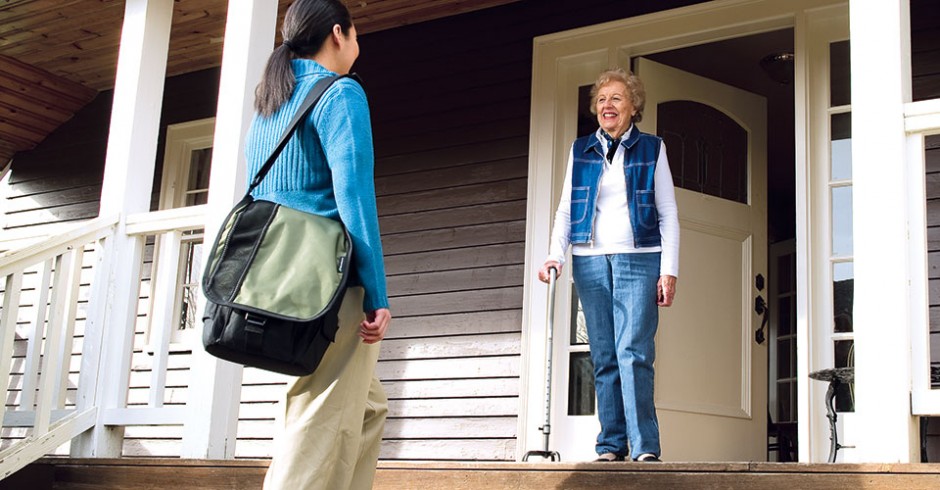People who need hospice services can receive care from the comfort of home. The Good Samaritan Society’s hospice teams travel to long-term care centers, assisted living residences and anywhere else patients live.
“We’re available to help the patient be comfortable, have dignity, feel supported and receive the best quality of care. We look at the whole person – their physical, emotional and spiritual well-being,” says Barb Tuchtenhagen, RN, administrator at Good Samaritan Society – Home Health & Hospice in Nisswa, Minnesota.
A full array of services
The Society’s home hospice teams include a nurse, a social worker, a chaplain, a massage therapist, home health aides and volunteers.
“Just like there is a care team when a baby is born, there is also a care team when a patient is at the end of their life,” Barb states.
The nurse visits to check vitals and help coordinate care, including any necessary equipment, supplies and medications. The chaplain provides spiritual care if it’s desired by the patient and family. Home health aides provide bathing support and volunteers are available if family members need to run an errand and would like someone to be with their loved one.
“Our volunteers are really good about sharing their stories, playing cards or sitting outside with patients when it’s nice out. Sometimes people just want to have someone to visit with,” says Barb.
Although the hospice team isn’t in a person’s home 24 hours a day, they can provide education to family caregivers around the clock.
“There is a nurse available 24 hours a day for calls,” Barb states. “Hospice also offers bereavement and grief support for families after the death of a loved one, which is really helpful as they begin the grieving process.”
How to get care
People can refer themselves or have their doctor make a referral for home hospice care.
“We have a lot of patients who self-refer and then we work with their provider to make sure they qualify,” says Barb. “A patient has to have a doctor certify that they’re considered terminally ill, which is when they are expected to live six months or less.”
Payment methods for hospice vary. Patients can pay through Medicare, Medicaid or private insurance.
“We have a lot of information on what is and what is not covered under hospice that we go over upon admission,” Barb mentions.
Creating a plan
Barb and her team help patients and their family members or other caregivers create a care plan that meets their needs.
“Patients are active members in decision making, choosing what’s important to them and what their goals are,” Barb says. “Sometimes making those end-of-life decisions is difficult, so we help them make the best choices for them by providing education and answering questions.”
Once a care plan is established, the hospice team works together to make the process as smooth as possible.
“If they have a concern and the nurse isn’t there, but the social worker is, they’ll contact the nurse to follow up,” says Barb. “Then the patient doesn’t have to make so many phone calls.”
Benefits are far reaching
There are many ways home hospice can make life easier for a family.
“It takes pressure off loved ones who maybe aren’t able to get around as easily,” Barb states. “Every week, we’re coming in for those visits to monitor blood pressure, temperature and medications.”
Home hospice care is also beneficial for those who live in rural areas.
“Having that support system that comes right to you is important,” she adds. “Here, we have a 60-mile radius from Nisswa that we go to. It doesn’t matter if you live in town or out in the country. We travel to the patient.”




